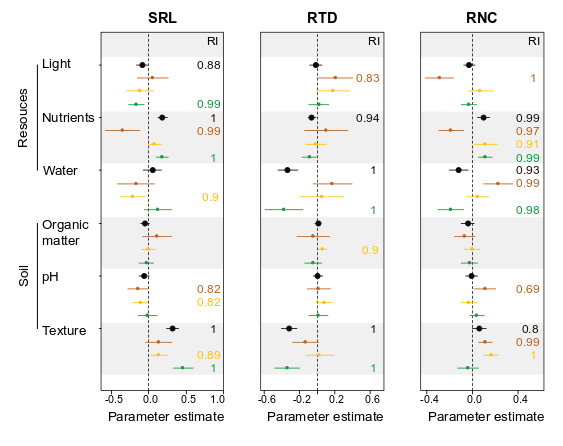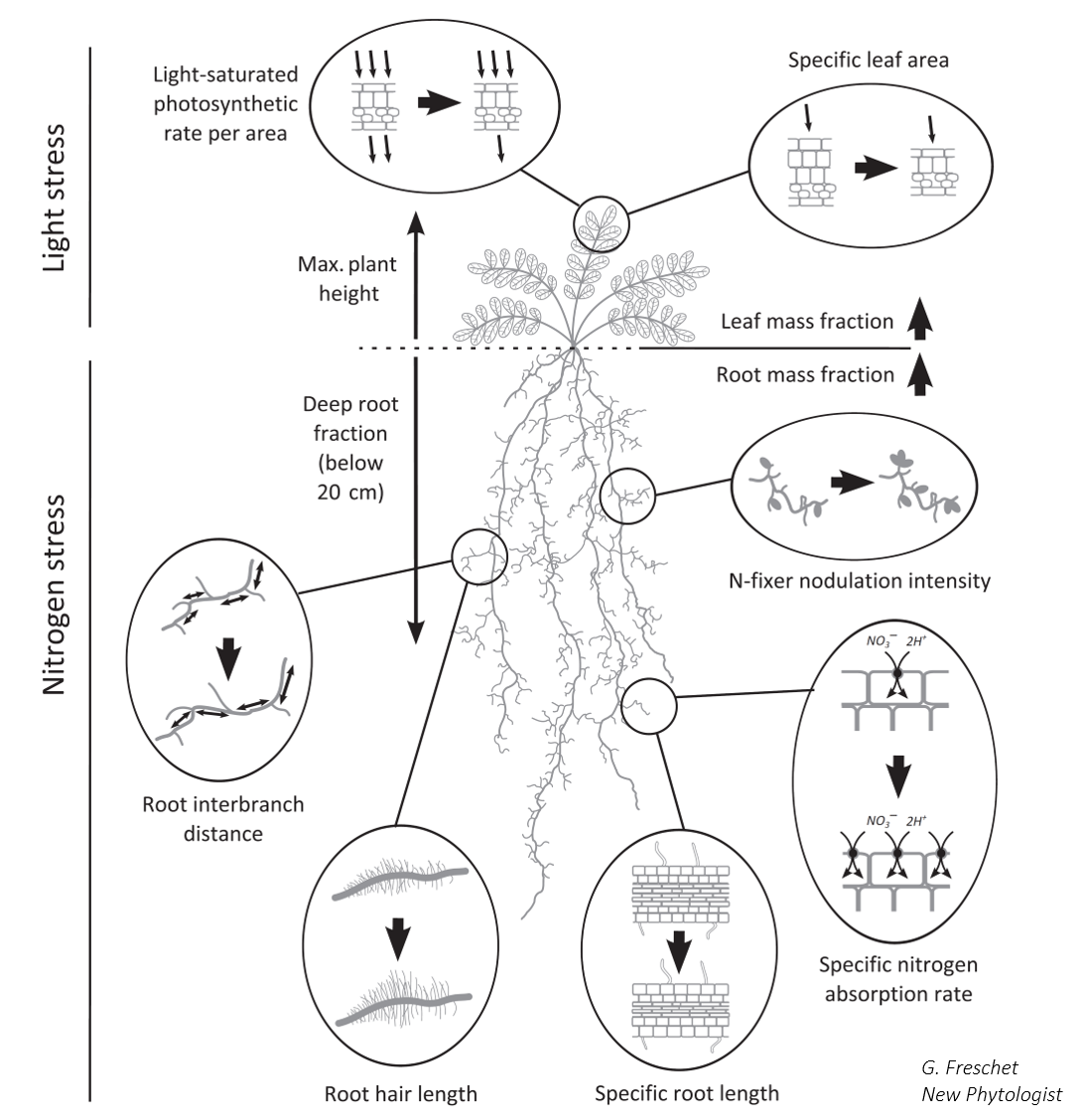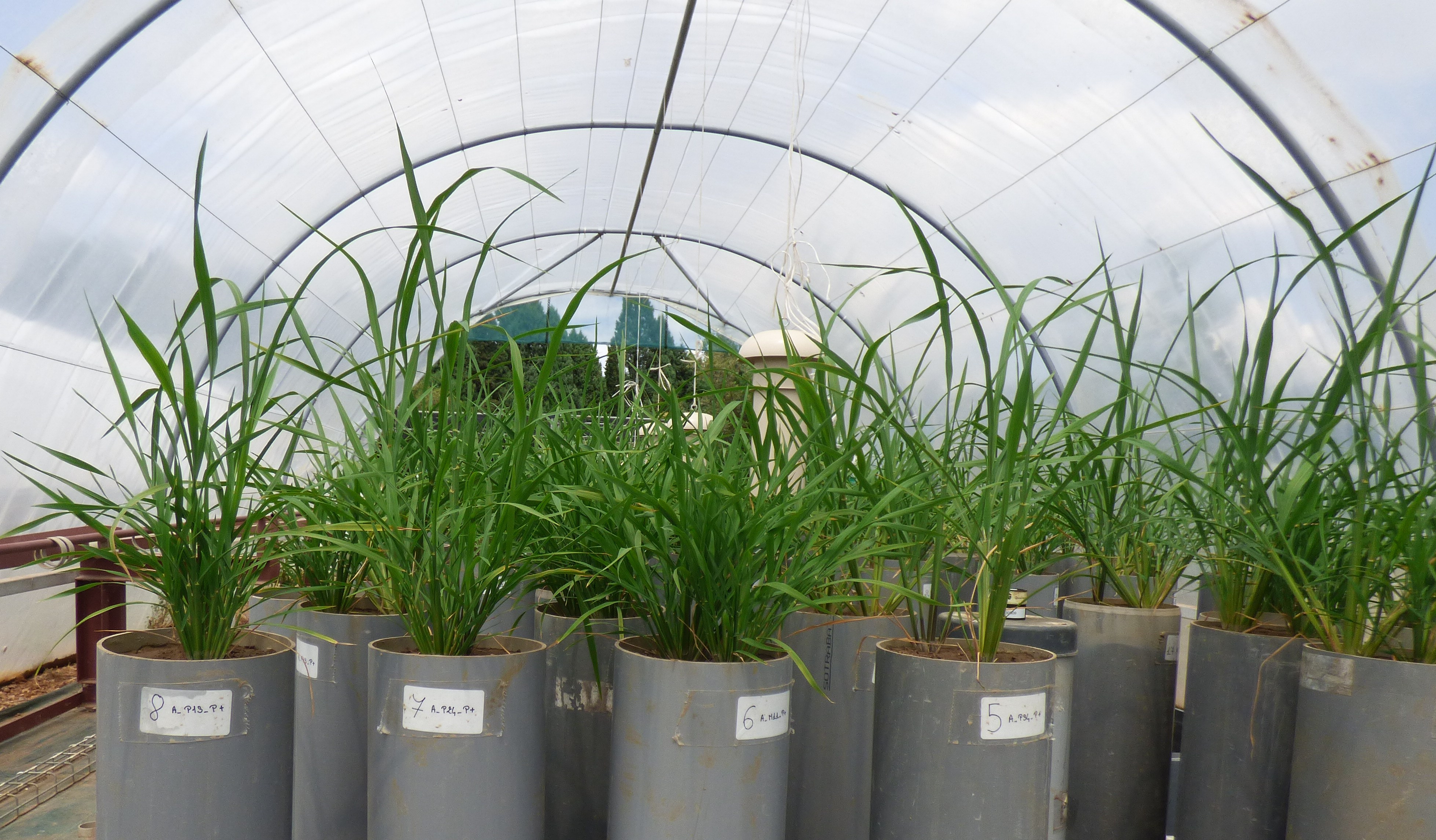Taïna Lemoine, Cyrille Violle, Eric Antoine Gonzalez, Mathis Gaubert, Aline Rocher, Hélène Fréville, Florian Fort
Journal of Experimental Botany, https://doi.org/10.1093/jxb/erae480
Abstract
The need to address the impact of domestication on plant traits is frequently highlighted in modern agriculture. It is often argued that domesticated plants have lost competitive ability due to reduced phenotypic plasticity. This study examines whether domestication has affected competitive ability, functional trait values, and plasticity in durum wheat across 39 genotypes representing four key stages of domestication, from wild progenitors to modern elite varieties.
Plants were grown in pots, both alone and in competition with a same neighboring genotype. Biomass, and above- and belowground traits were measured at the end of the vegetative stage. Our results show that the three domesticated groups lost less biomass in response to competition compared to their wild progenitors. All genotypes developed thinner leaves and thicker roots when grown with a neighbor. While wild progenitors exhibited the highest plasticity, this did not translate to a greater competitive ability. These findings challenge the theoretical expectation that domesticated plants are less suited for competition. Instead, they suggest that domesticated plants perform well in competitive environments and question the need to reintroduce wild traits to improve competitive ability.
Keywords: competition, domestication, durum wheat, functional traits, root traits, trait plasticity






 Allocation, morphology, physiology, architecture: the multiple facets of plant above and belowground responses to resource stress.
Allocation, morphology, physiology, architecture: the multiple facets of plant above and belowground responses to resource stress. 
